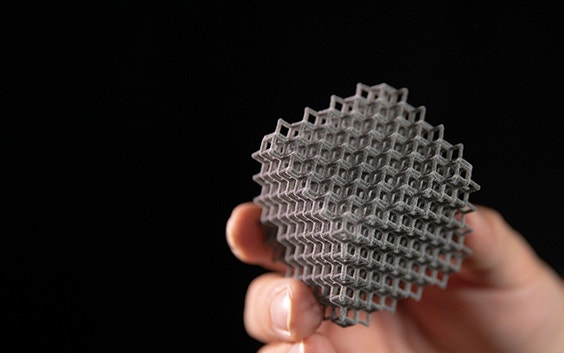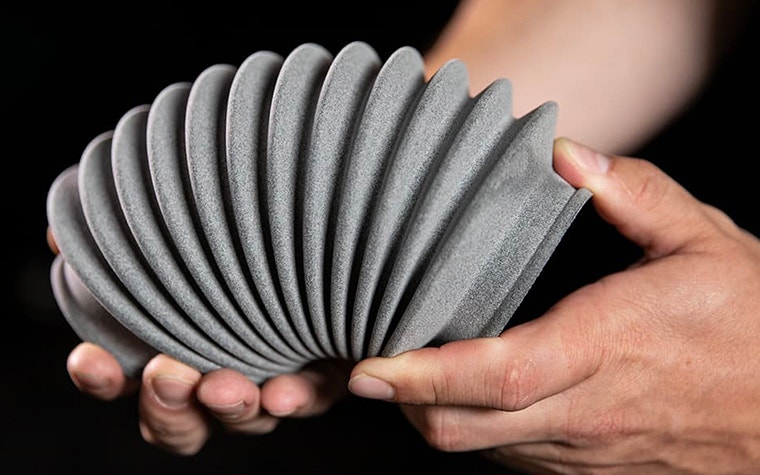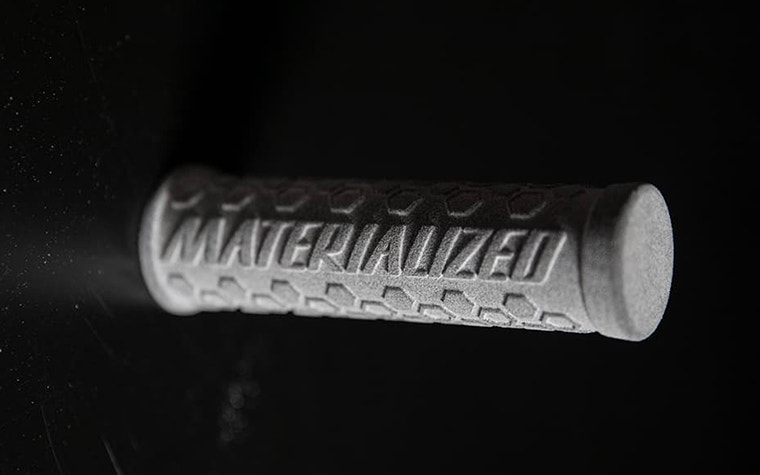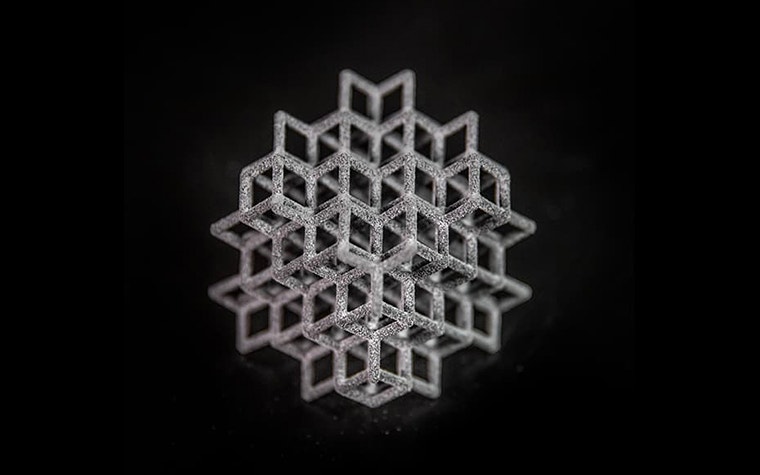
インタビュー
Our New TPU Has Crisper Details, Smoother Surfaces, and Higher Accuracy
What makes Materialise’s new Ultrasint TPU 90A-01 a dream for 3D printing? Its reliability, durability and extremely flexible nature, according Giovanni Vleminckx, Research Project Manager in our process engineering unit. We recently sat down with Giovanni, who researches all new materials and technologies that we offer, to get an insider’s view on the ins and outs of the new TPU offering made using Multi Jet Fusion (MJF).
What do you like most about TPU?
Ultrasint TPU 90A-01 is both super durable and resistant to wear and abrasion. The material has rubber-like elasticity making it very flexible and ideal for applications that require good shock absorption. And it can do all this while keeping a sharp level of detail.
Plus, TPU has an excellent shape memory. For example, you could drive over this TPU lattice cube, as well as the whole sphere, with a car and it would return to its original shape. This is a unique feature you would like to have in everything where you have these lattices incorporated, where you want to regain the shape that you originally have, but still have the possibility that your part can conform to certain deformations.


Could you take me through the differences between the old and new TPU offering?
The most important thing that you immediately see is the haptics – the overall look and feel of the material. We recently conducted a survey with our beta testers and over 85% said that the visual and tactile properties of the new TPU are better or much better than the old one. The respondents gave many positive reviews, saying that the new TPU has better elastic return, tolerances, density, and a fantastic surface quality.
The look is different as well – instead of being white like the old material, this one is gray, and we are currently working on adding finishes to the offering. Plus, as with other materials we’ve printed on MJF, we see that the details are very crisp overall.
What’s the difference between printing TPU on Laser Sintering and Multi Jet Fusion?
The old TPU was printed using Laser Sintering and the new one is made on Multi Jet Fusion. In general, we find MJF with TPU easier to process, which means it gives a more reliable outcome and we can have more accurate lead times. Both are powder bed processes, and the biggest difference is how they turn the powder into a part. In Laser Sintering, that's done with a laser that traces the whole contour of the part and the surface area of the part layer by layer. Multi Jet Fusion fuses the part together with a thermal ink or thermal agent. The thermal agent is exposed to heat and the agent then absorbs the heat and transmits it to the powder so that it can fuse.


Who uses TPU?
Outside of the 3D printing world, TPU is well-known for many applications where you want a rubber-like part. It's actually quite widely used. Think of footwear soles or dashboard covers. Plus, there are TPU materials in many different kinds, shapes, and colors.
For 3D printing, we see a lot of interest from the automotive and wearable sectors. Or we could think about other applications such as air ducts, complex tubing, grippers, seals, gaskets, and protective housing. Or something special like swimming or skiing goggles. They have a stiff frame and you could add a rubber-like material for better interface around your eyes. I've already test-printed safety goggles with the goal of having high impact resistance. You don't want a stiff frame that might break if something hits it. So you want something that you can survive in a tough environment.
“So there's a wide area of applications that are currently untapped that I feel we will be able to have a look into.”


What made you interested in the new TPU material?
We are continuously looking for materials that add value to our customers and started to investigate different possibilities for TPU because it’s a valuable material. During our search, we got in touch with BASF to see if we could partner with them for a new material. We have been investigating different possibilities. Why did we choose for this specific TPU? First of all, because we knew that TPU in laser sintering had many issues and the grade that didn't have as many processability issues had poor mechanical properties or surface properties. And BASF was looking into a TPU which can be printed on an HP Multi Jet Fusion machine, and through working with both BASF and HP, we were happy with the results that seemed to be the middle way, property-wise and processability-wise. That's why it was quite a straightforward decision to go for this and be the first on the market with this offering.
How does this change 3D printing on the grand scale?
It doesn't necessarily change 3D printing. What it does is provide a very welcome differentiator in the material offering, which is one of the trends Materialise predicted for 2019.
We've seen many big players like BASF and HP getting into 3D printing, making big waves with all kinds of new technologies and materials. In 3D printing, you have the benefit of freedom of design to be able to tweak the final part properties. But, for some properties, you're limited by the material. The more material diversity we have, the easier it will get to find - for prototyping - a prototype that is actually getting close to your endpoint.


So you will be able to do functional testing with prototypes, as well as end-use parts that are close to what you would have in large series using injection molding or extrusion, for example. We already have many rigid materials. But we don't have that many flexible or semiflexible materials. This makes TPU an important material.
以下で共有する:
